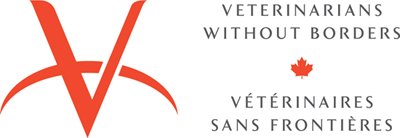One of the objectives of our project is to identify people and their families who will be next in line to receive goats, and then provide goats to them. So far mostly local meat goat breeds have been distributed. Last week 16 of these local meat goats were given out to 8 beneficiaries.
We have also been trying to identify beneficiaries that want and have the capacity to care for dairy goats, which require more intensive management. Milk from dairy goats can provide much needed dietary supplementation for children, women, and immunocomprimised or HIV positive individuals. When well managed dairy goats can be used to produce wealth for beneficiaries when extra milk not consumed by the family is sold or via selling dairy goat offspring, which command a higher market value than meat goats. In our parishes, there is a stigma against drinking goat’s milk (versus cow’s milk) mostly because it is largely a novel concept for most people in Uganda. For different reasons, dairy goat introductions to the parishes have been met with challenges and varying degrees of success. Some beneficiaries have simply not been managing the animals well – feeding them improperly, failing to keep them zero-grazed (bringing all their food to their pens to reduce disease acquired during grazing), or failing to keep breeding records or failing to even breed them at all.
Just as beneficiaries have been selected to receive goats, the paravets that we are training have been selected by their communities to help them manage their goats into the future. Like the beneficiaries, the paravets are community members, but in addition to receiving goats themselves they are also trained in livestock husbandry and then equipped with tools to manage their own goats as well as those of their community. Beneficiaries and paravets are often widowed parents, usually mothers or grandmothers, often with orphan children. Many of the paravets are widowed as a result of AIDS and some are HIV positive themselves.
One HIV positive paravet recently stepped down from her position as she was too busy with other pursuits. The other day I paid her farm a visit to inspect the dairy goat that she was given. In most cases dairy goats given out to beneficiaries have not yet been producing any milk either because they have been too poorly managed, are simply not being bred, or are still not mature enough to produce milk. This dairy goat was a welcomed successful exception. The paravet had been taking excellent records of her goat. Five months earlier her goat kidded a healthy male and has been producing milk ever since. She kept daily record of morning and evening milkings that showed that during the first few months between 2-5 litres of milk a day was being collected. Not only was this milk an important supplement to her own diet, but also for her many children.
It has become evident that despite all our efforts here with our Ugandan goat project only a little of what we accomplish may actually be sustained into the future. But it is stories like that of the paravet above that give a glimmer of hope that what is being established here by our efforts, from those before us, and by those that will come to contribute in the future, will continue to provide benefit to the local communities long after we are gone.

 Pig training day with Purinari, Hilda, and company.
Pig training day with Purinari, Hilda, and company. 







